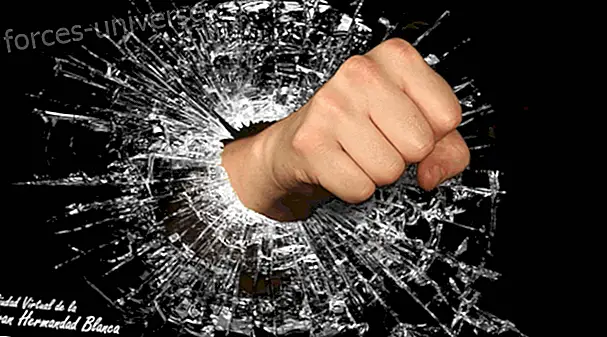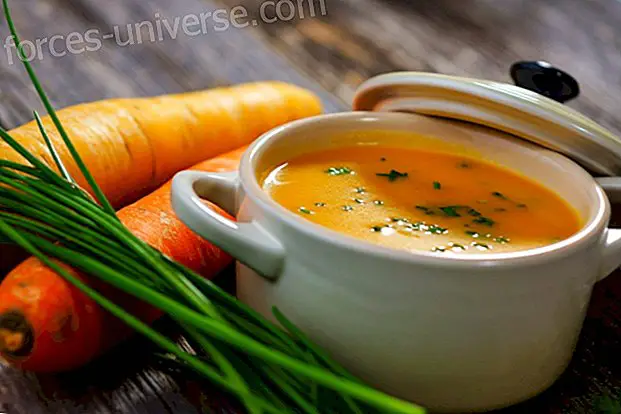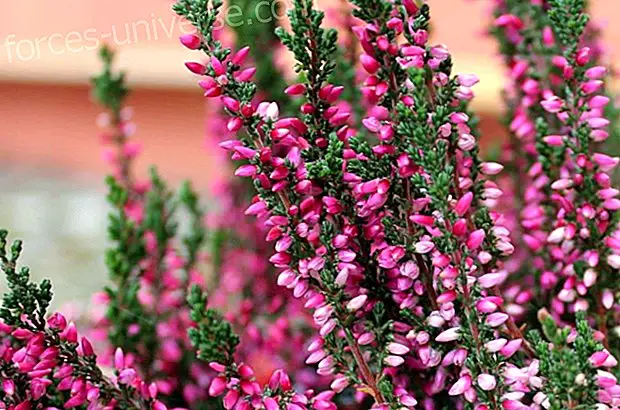
Daniel Jim nez 5/26/10 In the Healthy Living Category
We currently live surrounded by toxic chemicals. They reach us through food, water, cleaning products, pesticides, cosmetics, etc. Often, they are the cause of important diseases, such as allergy, asthma, diabetes or even cancer. But there are alternatives to lead a healthier life. Many of these alternatives are present in "Anti-Toxic, Live a healthier life". Edited by Espasa, it is the latest book by Carlos de Prada, a well-known journalist and writer, whose outstanding work in defense of the environment has earned him important awards, such as the United Nations Global 500 Award, the National Environment Award or the International Healthy Life Award, among others. In this interview, de Prada tells us about this interesting work, which can already be acquired in bookstores.
Positive News: This book shows where your work has been going on in recent years, focused on the denunciation of the presence of chemical contamination in virtually all areas of everyday life, and on the promotion of other healthier ways of life . But how far does the severity of the chemical contamination problem go?
Carlos de Prada: Few health and ecology problems are more important than this. A few years ago, in the Paris Appeal, several Nobel laureates and many other important scientists from around the world signed a statement stating that one of the biggest threats to health in the world is chemical pollution. Then there have been other statements, such as the Prague Declaration on endocrine disruptors, which warns of chemicals that disrupt the hormonal system, a problem that is associated with many pathologies.
Thousands of scientific studies show that exposure, sometimes at very low levels, to a number of polluting substances is associated with the increase in certain health problems, ranging from allergies to asthma, through autoimmune diseases or various types of cancer . Obesity, diabetes or infertility are also associated with exposure to these types of substances.
Man has produced in the last fifty years more than one hundred thousand synthetic chemicals, which in addition, combined with each other, have resulted in hundreds of thousands of chemicals that were not in nature. As in the human body everything works by the very fine and delicate balance of chemical substances, the presence of these substances, capable of altering said balance, can produce very remarkable effects.
N +: If this is such a serious problem, why is there so little talk about it in conventional media and in political debates?
CP: In general, the media presence of many current issues is usually inversely proportional to its importance. The more frivolous and more pathetic the subject, the more presence it has. There is nothing more to see the pink press, football or cheaper politicians. Apart from that, we must not forget that there are economic interests committed to this. The chemical industry, cousin sister of petroleum, of petrochemicals, is in all areas of life. From paints to plastics, through pesticides or drugs.
For all this, the existing resistance to apply what science knows are enormous. It takes decades, even though there is very reliable evidence of the damage caused by any substance, until a series of measures are taken. This has happened in cases such as asbestos or, for example, with lead, until it was removed from gasoline, although it was known of its negative effects on people.
N +: "Anti-Toxic" is written from a positive approach, offering healthy alternatives in many areas of everyday life. The book pays close attention to the closest environment of people, to articles of all kinds that enter the home. In this sense, where should we pay more attention?
CP: There is the idea that pollution is something that has to do with some workers in some industries, such as heavy industry or chemical industries, or with people living in a polluted environment, such as the bay of Algeciras, Huelva or Tarragona . What many people do not know is that a good part of the polluting substances is not that they are emitted into the atmosphere from the chimneys of a factory or discharged through a collector to a river, but that they are part of objects used daily in the houses.
There are toxic substances that are in cosmetics, in soaps, in shampoos, in paints that are used in a house. They can be in an air freshener, in a perfume, in the flame retardants that are used so that a sofa does not burn easily. They may be in things to which we are exposed daily. That is the reason why many of these contaminants appear in the blood and tissues of most westerners. What I try in this book is to draw attention to inadvertent exposures to toxic chemicals to give people warning, and give them alternatives, because there are alternatives.
N +: For example, in this work we talk about alternatives in fields such as food, appliances, perfumes or articles for cleaning and hygiene.
CP: It is a book written as a kind of manual, as a very simple guide. In which we speak, for example, of conventional cleaning products, which may contain very conflicting substances. There is also talk of the existence of other cleaning products, which can be purchased in eco-stores, or it is even possible to do them with existing things at home, using substances such as vinegar, baking soda or borax. You can perfectly clean a house without using these products marketed more widely, which can cause problems in some cases. For example, cleaning workers have asthma rates that are much higher than average.
There are also natural cosmetics, which do not contain a number of substances that can cause some health problems. In addition, there are ecological paints, based on vegetable oils.
On the other hand, food is very important. A part of toxins, such as persistent organic pollutants, can reach us through food. These compounds have appeared linked, according to thousands of scientific studies, to the most diverse health problems, including cancer. With a biological diet, which has no pesticides, for example, you are somehow avoiding the arrival of some toxic substances in your body. Toxics that in the case of women can end up in breast milk, thus happening to children. Or when they have children in formation within them, some alterations can be generated, which may later be manifested in the adult state, and no one will relate it to that exposure when it was an embryo.
What I try to do in the book is to show that there are alternatives. Because people in general don't even want to know about these things. Many people have a tendency to hypochondria, get scared of things and then say they don't want to know them. They believe that with the ostrich tactic they will conjure up the problems, when, as much as they don't want to see them, those substances are still there.
What I propose in the book are simple hygiene measures, just like those adopted to eliminate microorganisms. Sometimes in an exaggerated way, because there is a lot of hysteria in that. I propose hygiene measures focused on other pathogens that cause disease, which are toxic substances. You can really do a lot in a very simple way.
N +: Let's think about a person who did not know all these matters and read this book and considers that he wants to lead a healthier life. Where should you start making changes to live healthier?
CP: A priori, a person may find it very complex. Knowing that there are one hundred thousand synthetic chemicals, that thousands of them can be toxic and that they are in all the things that surround us can create a sense of overflow. In the book I show that what needs to be done is to establish an order of priorities. Maybe you can't avoid all the toxic ones, but a good part of them. For this, a series of measures must be adopted, with very simple steps, which can lead you to considerably reduce this toxic load, and therefore to reduce the risk of suffering a series of health problems.
The important thing is to establish an order of priorities. It is Machiavelli's maxim, of "divide and conquer." Instead of being overwhelmed, you have to select a number of things. For example, food, or house paints, or cleaning products, or cosmetics. Simply by acting on cosmetics or personal care products, you are already considerably reducing the arrival of a series of compounds in your body, for example phthalates or synthetic musks.
N +: You have also been characterized by reporting many of the diseases that are directly related to chemical contamination. In this sense, it is a champion of the cause of a particularly vulnerable group, such as those affected by multiple chemical sensitivity.
CP: This book could perfectly be a guide for people with multiple chemical sensitivity, although not only, because it is focused on the general population. But just as the population in general can be exposed to these substances and believe that nothing happens to them, (although later it can happen to them), in the case of people with multiple chemical sensitivity they should not ignore it, because they cannot be exposed to these substances, which immediately produce a reaction. In fact, some of the data in the book come from sources that have to do with these people, who due to their illness have taken great care to look for alternatives. They are products that do not cause reaction, precisely because they do not contain these toxic substances, which not only cause reaction to those affected by multiple chemical sensitivity, but also determined Studies link to other diseases.
N +: What type of recognition do environmental diseases have in Spain, such as multiple chemical sensitivity, by public administrations?
CP: In Spain, unfortunately the multiple chemical sensitivity is not recognized, as it is only in Germany or Japan. Environmental diseases do not tend to be well treated or recognized, which happens in two ways. Some, as in the case of chemical sensitivity in Spain, are not recognized. Now there is an open process on this issue in the Ministry of Health; Let's see what is left. Then there are diseases that are recognized as diseases, such as cancer or asthma. A very important percentage of them could have to do with exposure to toxic chemicals, but it is not usual to recognize that origin, because this may mean that compensation might have to be paid. n.
Spain is one of the countries, in terms of occupational diseases that often have to do with exposure to toxic chemicals, where these diseases are less recognized and more the workers who suffer from them are mistreated.
N +: Finally, let's leave a positive message. Another world without toxics is possible if
CP: Perfectly a world without toxics would be possible. Actually, many of these toxic chemicals are directly expendable. A false need was created by companies that had products they wanted to sell. They made wonderful marketing campaigns to sell them, and people, in a society driven by haste and lack of reflection, have dedicated themselves to buying those things as if they were the only ones possible. But there really are alternatives. From the beginning there were. There were, for example, other cleaning products before these were sold, and everyone cleaned the houses perfectly.
In addition there were already, before the pesticides were commercialized, biological control methods that were giving much more results. There were also natural perfumes, but they became synthetic. Actually, there have always been alternatives, since very often, what has been done is to create false needs to give way to synthetic products. Because the synthetic, unlike the natural, is synthesized by someone, who patents and sells it, while the natural is something else.
In many cases, a world without most of these toxic chemicals would be perfectly possible. Moreover, the question is not whether a world without these synthetic substances would be possible, but whether the world will be possible, as we know it, with them, since this not only affects people, but is also altering to the ecosystems. The question is whether a world in conditions will be possible if we continue to create and market substances without having previously been properly tested to verify their effects on people's health. I believe that a world is possible where commercial interests do not take precedence over other considerations. What I don't know if it's going to be possible is this upside down world we live in.
CONTACT INFORMATION:
Address: www.fondosaludambiental.org
Email:
Image: Book cover. Courtesy of Carlos de Prada.






